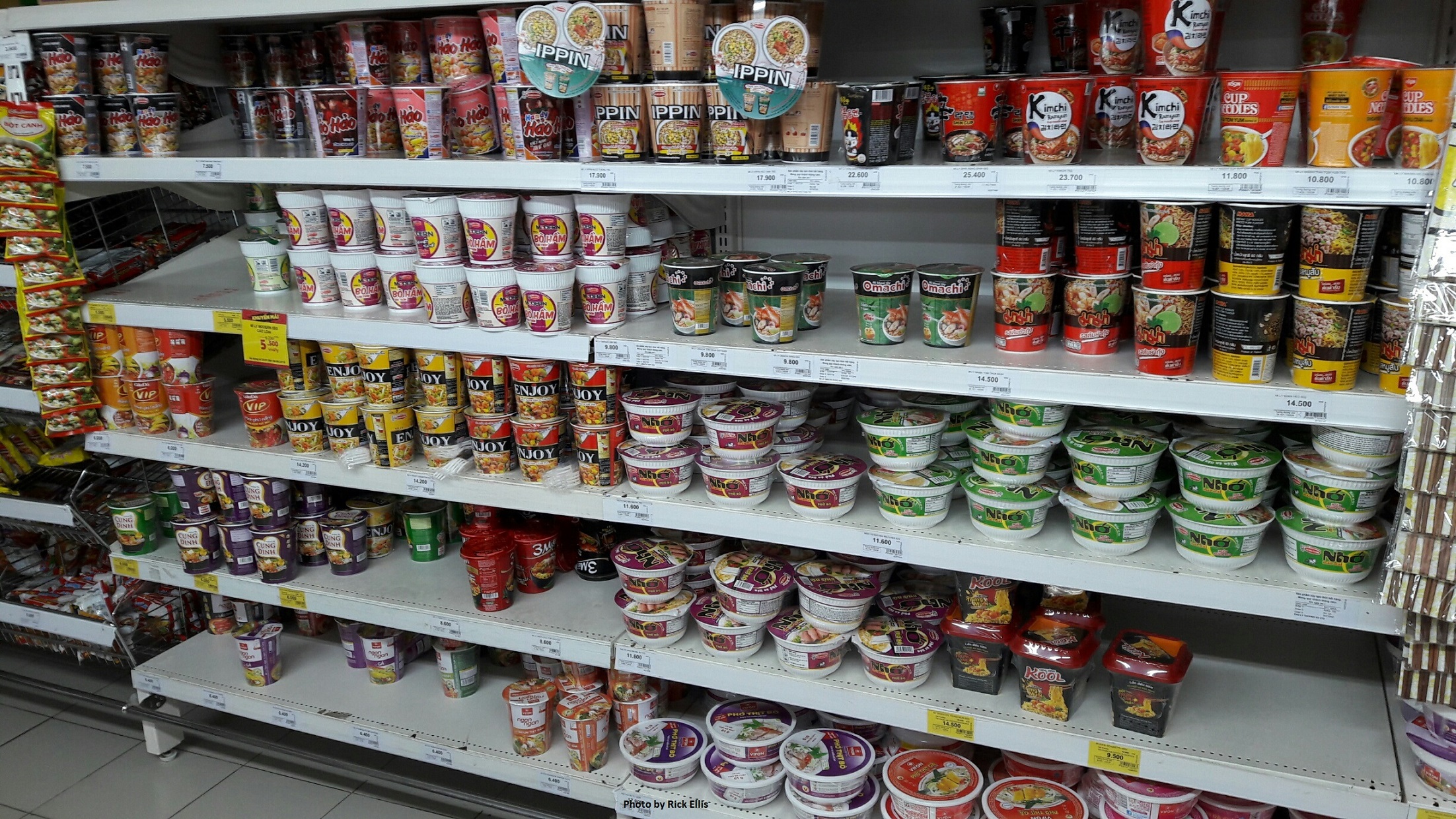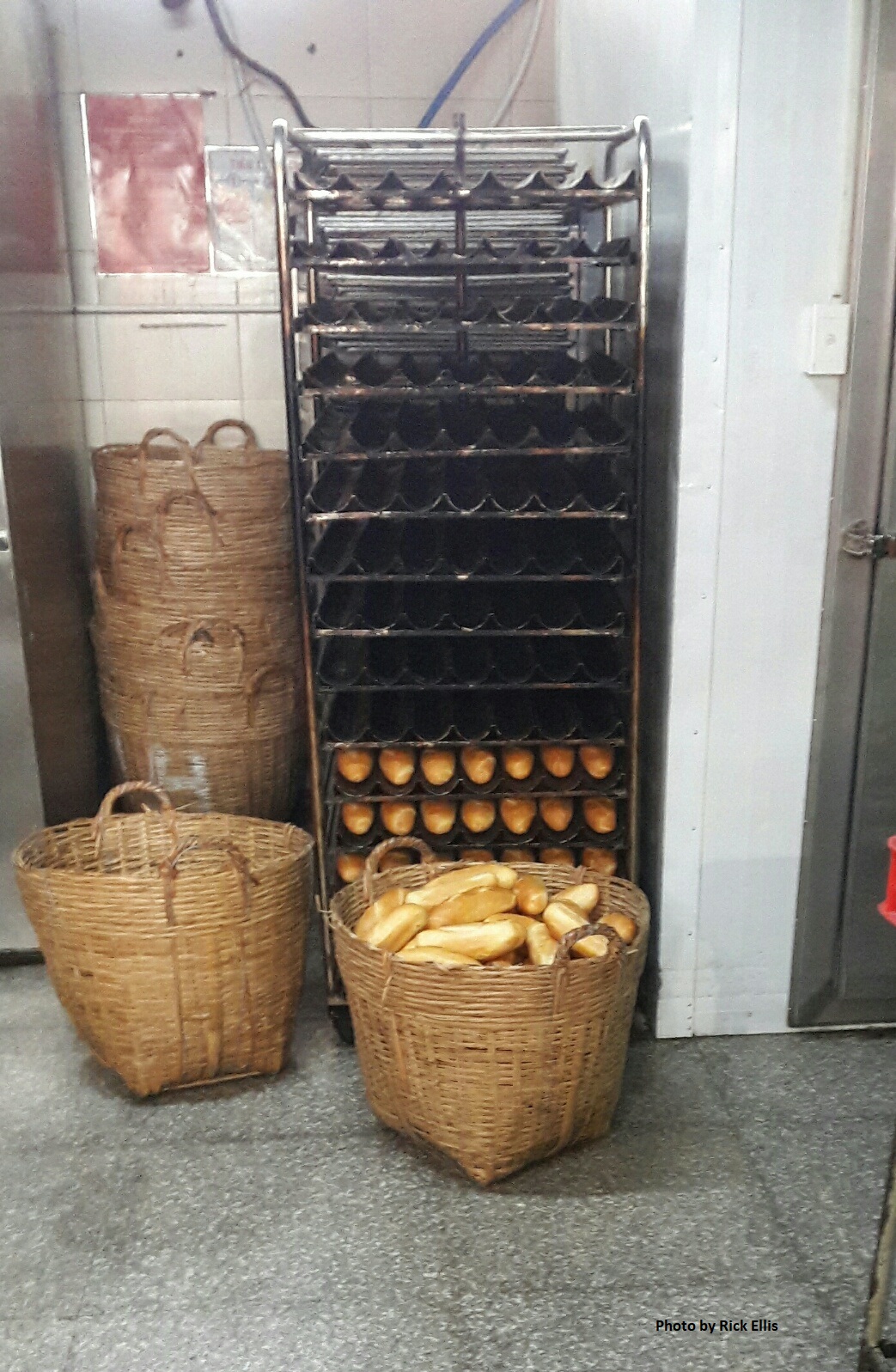Whenever I go to my favourite mom-and-pop neighbourhood retail shop I’m amazed that the owners are able to find anything because the place looks like it was hit by an earthquake, tsunami, and a typhoon – all at the same time.
When I make my request I can see the wheels turning in their minds: “Mmmmmm, now where did I put those foreign razor blades?”
One of them disappears into the semi-darkness of the rear of the dimly-lit shop, then I can hear rustling as if there was a bunch of rats fighting over morsels of food behind the counter, and finally like magic they reappear with exactly what I need.
It happens every time!
They have hundreds of products stashed away in corners, piled up all over the place, even hanging from the ceiling. Every cubic meter of space is utilized.
Mom and pop don’t “waste” money on things like bright lights, cute display cabinets, point-of-sale systems, and electronic payment methods. You give them the cash and they give you the goods. That’s it, that’s all.
When I go to one of the big cities in Vietnam I see the flashy, bright, sparkling new “convenience stores” and “mini marts” that are slowly creeping into the territory occupied by mom-and-pop shops.
For now the convenience stores are concentrated in a handful of large urban areas but if you live outside those areas the stores will be coming to a place near you sooner rather than later. Ho Chi Minh City had only about 300 such stores 4 years ago – since then the number has almost quadrupled.
South Korea and Japan are the champions of convenience stores in Asia with one for every 2,100 and 2,300 residents respectively. You can look around any street in any city in either country and one such store – if not two – will be within a stone’s throw.
In Vietnam there is currently a ratio of one convenience store for every 54,000 residents, so there are thousands of stores to be added in the coming years.
Several domestic and international players are already in this space: local corporation VinMart+, Circle K (USA), Family Mart (Japan), and CS25 (South Korea).
In a country where more than two-thirds of the population is 35 years of age or less, the convenience store is a red hot weapon for marketeers – that’s the age group that uses the new stores most. The stores are quite trendy with so many great products and features making them ideal places for younger people to hang out.
The biggest differences for us consumers are the new stores carry fresh food and pre-cooked meals, have bright display cabinets, seating areas and Wi-Fi, long opening hours, process electronic payments, and they’re air-conditioned.
 |
Hooray! Beat the heat, have a bite and a drink, catch up on your social networking, and it’s all reasonably priced.
The personal touch goes away with the advent of the new stores because the entrepreneur disappears, replaced by employees, but overall the service in the new stores is just fine, if not very good given all the varied tasks the staff must fulfill. It’s much more than just taking cash and making change.
But let’s say you need something that’s not in stock. In the new setup the employee will say they don’t have it and that’s the end of the conversation. Someone in the background decides which products get replenished and when based on purchases and inventory.
Mom and pop are the decision-makers, so they might be inclined to hop on their motorbike and get what you need if it’s worth it, or make a note and pick it up next time they’re out shopping.
 |
What’s the difference in the products?
Coffee comes first to mind. Mom and pop just carry the yucky instant variety – all right in emergencies, but really not good enough in this country of coffee lovers.
The coffee situation in convenience stores is weird: they have sophisticated electronic machines with many options such as cappuccino, espresso, and latte, but no local “cà phê sữa đá” (ice coffee with sweetened condensed milk).
I suppose the new stores don’t dare try to compete head-to-head with the traditional coffee shops and their fresh-ground robusta beans, rather offering the foreign coffee styles that are less common here in Vietnam.
With fresh food offerings the convenience stores compete directly against street vendors and small restaurants beyond the scope of mom and pop, who usually just have potato chips and packaged snacks such as instant noodles.
The meals are tasty and cheap – European-style pasta dishes, local rice dishes, salads, and many varieties of up-market instant noodles. The staff warm them up in the microwave in a jiffy which really does the trick.
But meals made fresh to order can’t be made by the convenience stores because stocking of ingredients and preparation are hard to manage.
One example off the top of my head are the “bánh bột” (shrimp dumpling) vendors and their little baskets of goodies used to prepare each order fresh on the spot. That doesn’t fit the convenience store model because it takes time unlike simply putting a hot dog in a bun or microwaving a meal.
The new stores can’t fire up a grill in the middle of the premises to make authentic “bánh căn” cakes or “bánh tráng nướng” crepes either. Or maybe they’ll find a way?
And what about the omnipresent brigade of lottery vendors? I guess they’ll be far fewer as the fancy computerized setups automate the whole process.
And the beloved “bánh mì” (Vietnamese baguette loaf or sandwich)? The bánh mì is a perfect example of “Just-In-Time” (known as JIT in manufacturing circles) production – a triumph in a world becoming dominated by pre-packaged goods.
All the convenience stores can offer are soft, squishy “hoagie” style bread rolls which are produced in some far-off facility and often sit around for a couple of days. They can’t compare to the bánh mì.
In Vietnamese food culture the baguette must be very fresh, baked within the last few hours or less, and often so fresh it’s warm to the touch.
Many bakeries bake their own baguettes right on site so their sandwiches are freshest and the bánh mì is soft yet crackly. Restaurants and street vendors I frequent replenish their bánh mì several times per day, running down to the bakery to pick up just a few at a time.
 |
So rest assured, despite all these wonderful new features, the beloved bánh mì and other street goodies aren’t going to be replaced any time soon, if at all.
The lottery machine goes “RAT-A-TAT” as it prints out a ticket, the microwave emits a big “DING” when its cycle is complete, and the bar code scanner gives off that shrill “BEEP” every time a product is swiped.
All this progress is great and welcome, but things won’t be the same.




















































